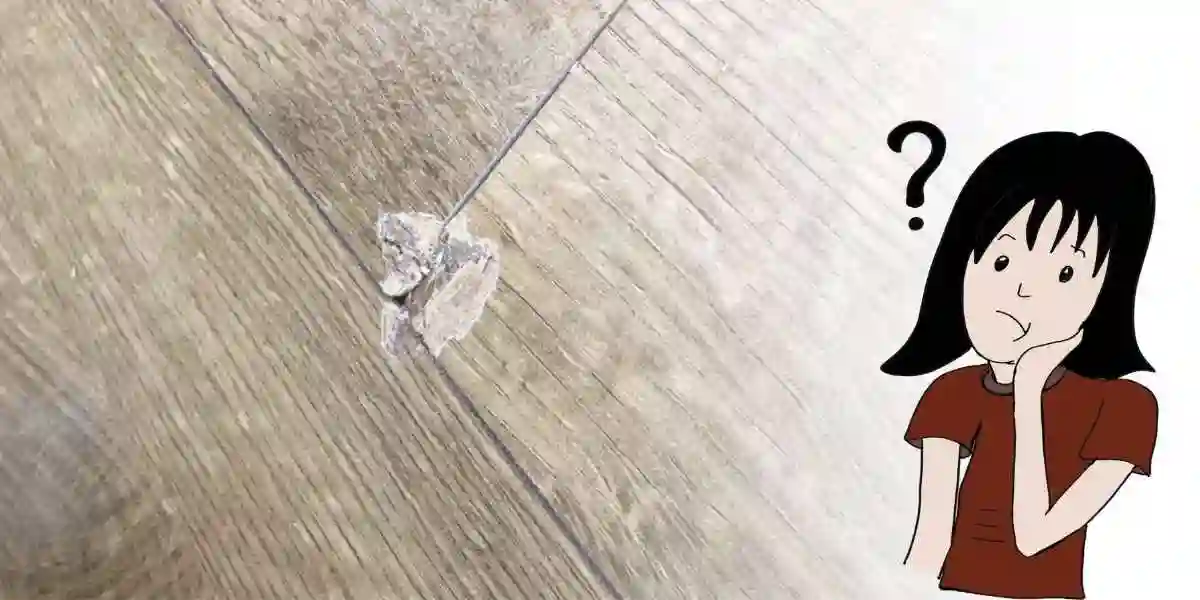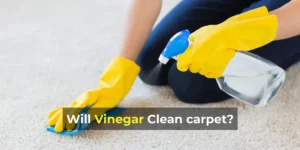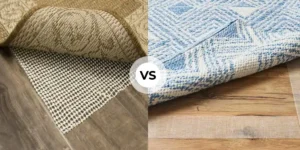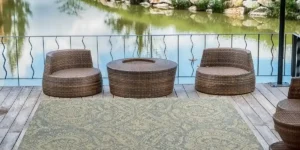Laminate flooring is a popular choice for many homeowners. The main reason for this is their durability, affordability, and aesthetic appeal.
When installed, it gives the illusion of wood flooring. While being cost-effective and aesthetically pleasing.
Laminate floors are durable, but they also have some weaknesses. Despite its appearance as wood, moisture can still scratch, damage, chip, or peel it.
Peeling laminate can be an eyesore and a headache. It may result from wear and tear, water damage, or simply the passage of time.
You can repair laminate floors without calling in a professional, and it is an easy task.
So, to find out what is the best way to fix a peeling laminate floor. Below-mentioned DIY fixes are simple to follow.
Additionally, this article will explain how to maintain laminate flooring and prevent damage. But first, you need to understand: Why your laminate floor is peeling.
Why is Your Laminate Floor Peeling?
Ever wonder why your laminate floor is peeling? Well, it’s usually because of some troublemakers.
First up, moisture is the most common cause of peeling laminate floors. Water damages laminate flooring by accumulating layers on the surface. This causes the wood materials to peel away.
When the floor absorbs enough water, it seeps into the joints that hold the boards together. It causes them to wrap, stretch, and weaken the glue at the joints, causing the boards to separate.
The humidity in the air may also cause your laminate floors to peel. Avoid spilling water on your laminate floor, and if you do, don’t let it sit for too long; wipe it up immediately. Water can also cause them to bubble and swell.
Here’s another concern: too much sunlight. Excessive sun exposure can damage and weaken the outer layer. Sunlight coming in through your windows can lead to issues.
Also see: How to Dry Water Under Laminate Flooring? (9 Easy Steps)
How to Fix Peeling Laminate Flooring?
Using Glue or Epoxy Gum
When your laminate is at its initial peeling stage, glue is the most effective method of fixing it. Yet, the glue may not be the most effective solution for extensive peeling.
Corners are the first to peel. If you notice peeling, apply adhesive (superglue or epoxy gum) where necessary.
But here is a twist: Be careful not to overuse adhesive. Apply the glue beneath the peel using a toothpick or matchbox dipped in the adhesives. By doing this, you will get enough bonds under the peel for it to be more effective.
Sanding and Painting
If the peeling is too far gone, the glue may not be effective. In such a case, you will need to remove the peeling laminate. Use sandpaper to sand off that floor area, and you can proceed to paint or replace the board.
Once the paint is dry and looking fab, seal the deal with a clear floor sealant. Let it dry completely before you start walking on your renewed laminate floor.
Using a Laminate Repair Kit
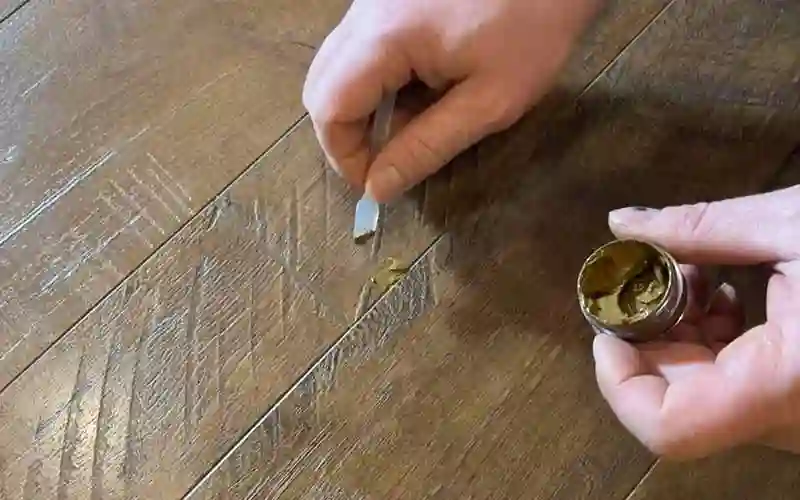
Using a DIY laminate repair kit is best to fix a chipped laminate floor. You can get a laminate repair kit at any home improvement store. Bring a sample of your laminate flooring, or buy one online.
Consider a kit with a wide range of color options. It includes a color chart to help you match your flooring color as closely as possible.
Locate the closest color on the color chart, and mix the colors accordingly. With the applier, apply a generous amount of the color you have mixed. Gently wipe away any excess color.
To speed up the drying process, use a hair dryer on low settings. And add several layers until you’ve reached the perfect finish.
Note: You should have a damp paper towel or cloth around if you need to clean things.
Using Wood Putty
It is recommended to use wood putty when you have a quarter-inch or larger hole on your laminate floor to fill. There are a variety of colors and amounts available.
Well, if you cannot find a wood putty match for your floor, you can spice up the decor of your home by mixing two colors.
With wood putty, you can easily fill gaps and coat laminate floors. Also, for your wood putty buy, you will need a cleaning solvent.
Remove all the wood splinters from the hole, using a knife before filling. After cleaning up the chipping or peeling area with a cleaning solvent, use a putty knife to apply the wood putty there.
So, apply a shallow layer of wood putty and gently press it before it dries completely. Afterward, use a putty knife to wipe off the excess putty completely.
Using Hard Wax for Filling
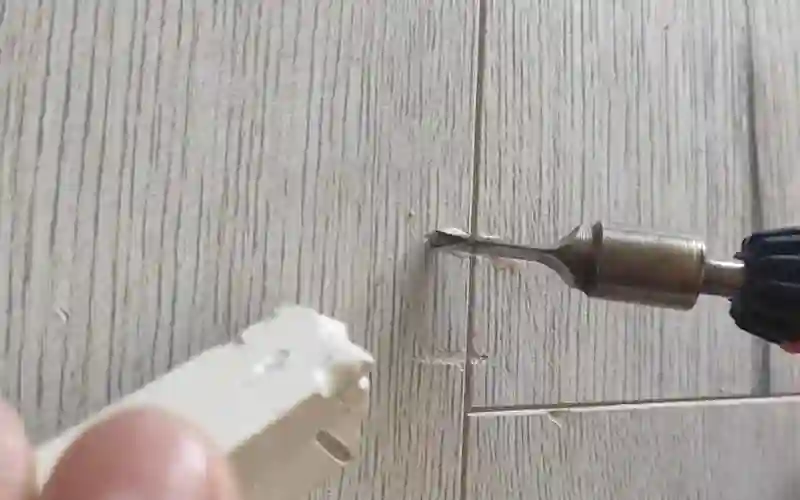
When it comes to fixing up your floor, using hard wax is like your secret weapon. It’s a simple and effective way to fill in those gaps, scratches, or dings that make your floor look a bit beat up.
It is more convenient to use wax than wood putty. Since wax fillers are ready to use once set, they’re a very quick option. Because there’s no drying, setting, or curing time to worry about.
As a bonus, waxing laminate flooring is more permanent than wood putty. But otherwise, they are pretty much the same.
To fill a hole with wax, clean the damaged area, then apply the wax using your soldering iron. Make sure you use the closest color of wax that matches your flooring. Once the wax has cooled, remove it with a spatula and level the surface.
Pro Tip: Painting the same structure of your flooring on the surface with wax is the best way to get the perfect finish.
Replacing the Boards
In some cases, all these remedies may not be enough if the chipping or peeling is too much.
So, they recur at the same spot; you may need to replace the board. Installing a laminate flooring section is straightforward because there are no nails or glues.
Whether you have laminate floors in your home or plan to install them, always keep an extra box of flooring. You may need it to replace a section.
So, start by removing the baseboards and one plank at a time until you reach the damaged area. Replace the peeling plank with a brand-new one and replace the undamaged planks with new ones.
If the peeling plank is in the middle of the room, replacing the plank will be more difficult. Try to repair the area rather than replace it to avoid damaging more floor areas.
But, if you have to replace it, consult with an expert and find out the right way to do it. Unlocking planks from the floor takes some effort, but it is easy. Ensure the planks are placed correctly during the replacement process and reinstalling molding.
Changing a Board in the Middle of the Flooring
If you spot a troublemaker board causing the peeling trouble in the middle of your floor, here’s a simple fix. First, take a saw and carefully cut out the damaged board.
Once the old board is out, put a replacement board that matches the rest of your floor. Then, slide it into the gap, making sure it clicks firmly into place. It’s as easy as fitting a puzzle piece.
Tips to Maintain Your Laminate Flooring
- Clean spills immediately: When a spill stays on the floor for some time, some moisture seeps between the planks. And it causes warping, peeling, and other defects.
- Avoid scratching and dirt: Dragging furniture on laminate flooring can lead to scratching, which damages the floor. Protect your floors by putting felt adhesive furniture pads on furniture bottoms. In this way, you can drag the furniture comfortably.
- Please make the necessary repairs: Always have a repair kit around to deal with damages as soon as they occur. It helps prevent the damage from becoming worse. Always look around the floor to ensure no defects, such as everyday scrapes and scratches.
- Avoid abrasive tools: Heavy tools can damage the laminate flooring coat and displace the boards. It would be best if you also avoided acidic cleaners.
- Sweep Regularly: Clean your laminate floor regularly to keep dirt and dust away. Use a soft broom or vacuum cleaner with a soft brush attachment, it works like a charm.
Read More on Laminate Floors
- How to Remove Scuff Marks from Laminate Flooring? (4 Helpful Solutions)
- A Guide to Remove Sticky Residue from Laminate Flooring
- How to Protect Laminate Flooring from Rolling Chairs? (5 Best Ways)
- How to Stop Bed Moving on Laminate Floor? (9 Best Ways)
- How to Remove Candle Wax from Laminate Flooring? (4 Easy Steps)

